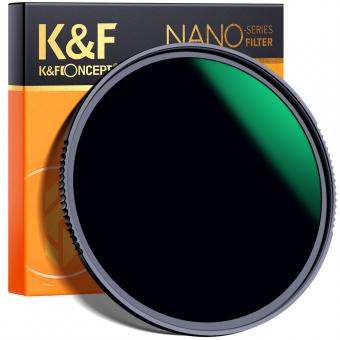How Do You Get Microscopic Colitis ?
Microscopic colitis is a type of inflammatory bowel disease that causes chronic diarrhea. The exact cause of microscopic colitis is unknown, but it is believed to be related to an abnormal immune response in the colon. It is not contagious and does not appear to be caused by diet or lifestyle factors.
1、 Pathogenesis of microscopic colitis: current understanding and theories.
Microscopic colitis is a type of inflammatory bowel disease characterized by chronic diarrhea and inflammation of the colon. The exact cause of microscopic colitis is not fully understood, but current research suggests a combination of genetic, environmental, and immune system factors play a role in its pathogenesis.
Genetic factors: Studies have shown that there may be a genetic predisposition to developing microscopic colitis. Certain genetic variations have been identified that increase the risk of developing the condition. However, more research is needed to fully understand the genetic basis of microscopic colitis.
Environmental factors: Several environmental factors have been associated with an increased risk of developing microscopic colitis. These include smoking, certain medications (such as nonsteroidal anti-inflammatory drugs), infections, and exposure to certain toxins. However, the exact mechanisms by which these factors contribute to the development of microscopic colitis are still being investigated.
Immune system dysfunction: It is believed that microscopic colitis is an immune-mediated disorder, where the immune system mistakenly attacks the lining of the colon, leading to inflammation. The exact trigger for this immune response is not known, but it is thought to involve a combination of genetic and environmental factors.
Latest point of view: Recent research has focused on the role of the gut microbiome in the development of microscopic colitis. The gut microbiome refers to the trillions of bacteria and other microorganisms that reside in the gastrointestinal tract. Imbalances in the gut microbiome, known as dysbiosis, have been observed in individuals with microscopic colitis. This dysbiosis may contribute to the inflammation and symptoms associated with the condition. Further research is needed to fully understand the complex interactions between the gut microbiome and the development of microscopic colitis.
In conclusion, the pathogenesis of microscopic colitis involves a combination of genetic, environmental, and immune system factors. Ongoing research, including the investigation of the gut microbiome, is shedding light on the underlying mechanisms of this condition.
2、 Risk factors for developing microscopic colitis.
Microscopic colitis is a condition characterized by chronic inflammation of the colon, leading to symptoms such as chronic watery diarrhea. The exact cause of microscopic colitis is still unknown, but there are several risk factors that have been identified.
1. Age: Microscopic colitis is more commonly diagnosed in individuals over the age of 50, although it can occur at any age.
2. Gender: Women are more likely to develop microscopic colitis than men, although the reason for this is unclear.
3. Autoimmune disorders: There is a strong association between microscopic colitis and autoimmune disorders such as celiac disease, rheumatoid arthritis, and thyroid disorders. It is believed that an abnormal immune response plays a role in the development of microscopic colitis.
4. Medications: Certain medications have been linked to an increased risk of developing microscopic colitis. These include nonsteroidal anti-inflammatory drugs (NSAIDs), proton pump inhibitors (PPIs), and selective serotonin reuptake inhibitors (SSRIs).
5. Smoking: Smoking has been identified as a potential risk factor for microscopic colitis, although more research is needed to fully understand the relationship.
6. Genetic factors: There may be a genetic predisposition to developing microscopic colitis, as it has been observed to run in families.
It is important to note that while these risk factors have been identified, they do not guarantee the development of microscopic colitis. Additionally, the latest research suggests that there may be a complex interplay between genetic, environmental, and immune factors in the development of this condition. Further studies are needed to fully understand the causes and risk factors associated with microscopic colitis.
3、 Clinical presentation and symptoms of microscopic colitis.
Microscopic colitis is a type of inflammatory bowel disease (IBD) that primarily affects the colon. The exact cause of microscopic colitis is still unknown, but several factors have been suggested to contribute to its development. These factors include autoimmune reactions, genetic predisposition, environmental triggers, and certain medications.
Autoimmune reactions: It is believed that microscopic colitis occurs when the immune system mistakenly attacks the cells lining the colon, leading to inflammation. This autoimmune response is thought to be triggered by an unknown antigen.
Genetic predisposition: Studies have shown that there may be a genetic component to microscopic colitis. Individuals with a family history of IBD, including microscopic colitis, may have an increased risk of developing the condition.
Environmental triggers: Certain environmental factors may play a role in the development of microscopic colitis. These can include smoking, exposure to certain toxins, and infections.
Medications: Some medications have been associated with an increased risk of developing microscopic colitis. Nonsteroidal anti-inflammatory drugs (NSAIDs), proton pump inhibitors (PPIs), and selective serotonin reuptake inhibitors (SSRIs) have been linked to the development of microscopic colitis in some individuals.
Clinical presentation and symptoms of microscopic colitis typically include chronic watery diarrhea, abdominal pain, and weight loss. The diarrhea is often non-bloody and may occur multiple times a day. Other symptoms can include fatigue, dehydration, and electrolyte imbalances. It is important to note that the severity of symptoms can vary among individuals, and some may experience periods of remission.
In recent years, there has been an increased recognition of microscopic colitis as a distinct entity within the spectrum of IBD. Advances in diagnostic techniques, such as colonoscopy with biopsy, have improved the identification and understanding of microscopic colitis. Additionally, research is ongoing to further elucidate the underlying mechanisms and potential new treatment options for this condition.
In conclusion, while the exact cause of microscopic colitis remains unknown, autoimmune reactions, genetic predisposition, environmental triggers, and certain medications are believed to contribute to its development. The clinical presentation of microscopic colitis includes chronic watery diarrhea, abdominal pain, and weight loss. Ongoing research aims to improve our understanding of this condition and develop more effective treatment strategies.
4、 Diagnostic methods for identifying microscopic colitis.
Microscopic colitis is a condition characterized by chronic inflammation of the colon, specifically the lining of the colon. The exact cause of microscopic colitis is still unknown, but there are several factors that may contribute to its development.
One possible way to get microscopic colitis is through an autoimmune response. It is believed that the immune system mistakenly attacks the colon, leading to inflammation. However, the trigger for this autoimmune response is not yet fully understood.
Another potential cause is the use of certain medications. Nonsteroidal anti-inflammatory drugs (NSAIDs) such as ibuprofen and naproxen have been associated with an increased risk of developing microscopic colitis. Other medications, such as proton pump inhibitors (PPIs) used to treat acid reflux, have also been linked to the condition.
Infections may also play a role in the development of microscopic colitis. Some studies have suggested that certain bacteria or viruses may trigger an immune response in the colon, leading to inflammation.
To diagnose microscopic colitis, several diagnostic methods can be used. The gold standard for diagnosis is a colonoscopy with biopsies. During this procedure, a flexible tube with a camera is inserted into the colon, allowing the doctor to examine the lining of the colon and take small tissue samples for analysis under a microscope. The presence of specific microscopic changes, such as increased lymphocytes or collagen, can confirm the diagnosis of microscopic colitis.
In recent years, there have been advancements in diagnostic methods for identifying microscopic colitis. One such method is the use of stool tests to detect specific markers of inflammation in the colon. These tests can provide a non-invasive alternative to colonoscopy and may be particularly useful in cases where colonoscopy is not feasible or desired.
In conclusion, the exact cause of microscopic colitis is still unknown, but factors such as autoimmune responses, medication use, and infections may contribute to its development. The gold standard for diagnosis is a colonoscopy with biopsies, but newer diagnostic methods, such as stool tests, are also being explored. Further research is needed to fully understand the causes and improve diagnostic methods for microscopic colitis.





























